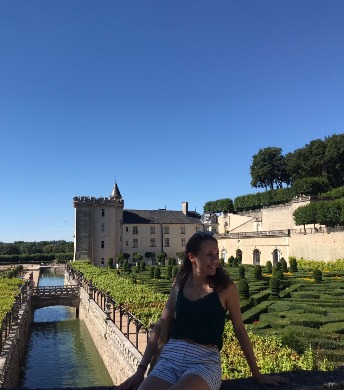CAG students talk about their favourite courses

What courses do you take as a CAG student? What is a really fun project? Erika, Tialde and Maud talk about their favourite course, what they learned from it, and how they apply the knowledge they learned in their everyday life.
Erika: So far, my favourite course has been Place, Regions and Identities. In a nutshell, the course explores the evolving role of culture and identities in relation to places and regions within a globalised world. The core of the course was strategically organised around a few key concepts, which in my opinion, made the content of the course visualisable. These concepts were clearly presented by the assigned literature and further explored during the lectures through the use of, among other things, maps. Overall, I liked the coherence throughout the course in terms of themes and structure, which gave me time to get familiar with the arguments in the literature and to re-elaborate them with examples coming from my own experiences. It introduced me to a new way of looking at the interactions between identity formation and place, that is, as a geographer, thereby broadening my understanding of societal and political happenings.
Once you have learnt to look at the influence that places have on human behaviours and identities, and vice versa, you can't unlearn it. Practically, this means that whenever I read the news or am asked what I think of something, I cannot decouple my answer from geographical considerations, i.e. where specifically a phenomenon took place, the spatial configuration of that place in a historical perspective.
Tialde: For me, my favourite course so far is Nature, Landscape & Heritage. It’s about the world we live in and how natural and cultural factors have shaped it. It discusses heritage, how it’s valued, who might own heritage, and how to preserve it. Aside from this, the course delves into the landscape and the layers in it that can be distinguished that have formed over time and that can be seen if you look closely and know what to look for. This course touched upon subjects that I personally really enjoy, and therefore I found it quite interesting from the start. It was taught through an interesting mix of lectures and field trips and gave us a glimpse of what it might be like to work in this field through company visits. A fun assignment has been to make a landscape biography, looking into an area of your choice and exploring its natural and cultural history, which was very interesting. I’ve learned to look at both heritage and landscape differently. Both concepts are much more complex than I initially realised. Heritage can bring people together but also be a source of conflict. It can be dealt with in many different ways, but it is hard to say what is the right way. The landscape itself tells its own history, and if you know what to look for, you can learn this history by observing it. Even the smallest of places have very rich histories which have helped shape the way they are today. I've come to find that it is important to conserve this heritage so future generations can enjoy it as well.
I had not yet considered the landscape I live in to be heritage, but through this course, I’ve started looking at the world around me a little differently. The buildings, infrastructure, and nature around us tell the story of how a place was shaped and what we, as people, value and want to preserve for future generations. I’ve always enjoyed looking at older buildings and many features in the landscape, but this realisation has brought me a new type of appreciation for the world around me.

Maud: It’s hard to pick a favourite because many have been incredibly interesting, but one I really liked was Adaptation Governance. It is a broad introduction to climate adaptation, from why it’s needed to the forms it can take and the (complex) governance of it. I liked it because it did a great job of introducing the topic of adaptation with all its considerations engagingly and openly, which was great for me, coming from a different academic background. Along the course, multiple guest lectures from experts and a field trip made it a fun course, although this is true for many other courses in the programme too. I would say the basics of climate change and adaptation with some more detailed looks into certain areas, such as adaptation finance and insights from very relevant research projects in disaster reduction and climate adaptation. Altogether, a good understanding of climate adaptation, its governance, and the stakeholders involved. Being one of the first courses of the year, it provided a great basis for the courses that followed. Throughout the programme, it’s easy to see the connections between the different courses, which really build on each other.
When looking at certain situations, be it a flood in a faraway country or a heatwave in my country, I now have a better understanding of the systemic risk involved and what is needed in terms of governance on all levels to adapt to climate change, and such risk is general.

